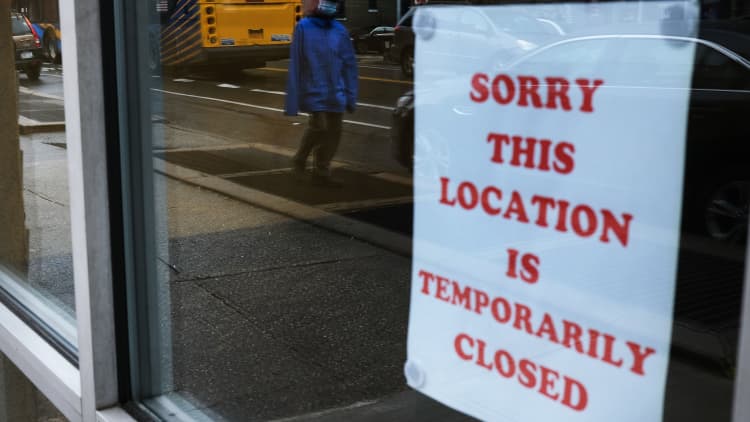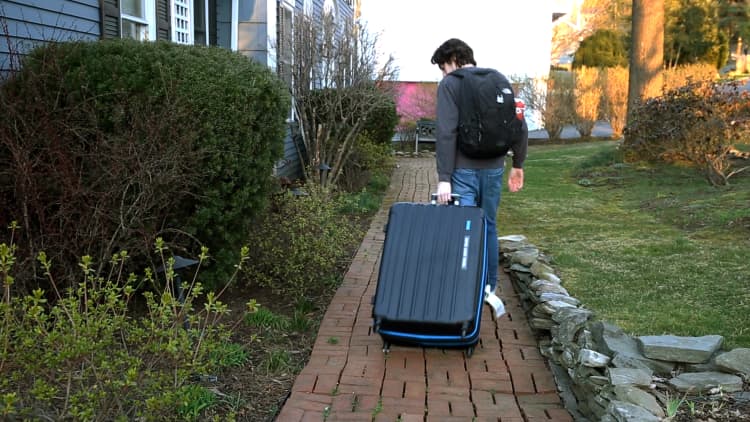On Friday, nurses across the country went on strike to call attention to a lack of vital personal protective equipment, known as PPE, for health-care workers. Essential workers such as these have spoken up about shortages of necessary PPE, such as masks and face shields, for months.
State officials, medical experts and health-care workers pleaded for President Donald Trump to invoke the Defense Production Act for weeks before he finally compelled companies to produce life-saving PPE such as N95 masks on April 10th. Today, many states still lack the equipment they need to contain the spread of coronavirus, making it difficult for hospitals to save patients and protect the lives of their employees.
Some organizations have stepped up to help meet this demand, among them are colleges and universities.
Colleges have found unique ways to produce PPE for essential workers in their communities, building upon an underground network of 3-D printing enthusiasts and harnessing the collective knowledge and goodwill of professors, students and researchers, demonstrating the vital role that colleges and universities play in communities across the country.
CNBC Make It spoke with some of the people behind the movement on college campuses to help create what their communities needed most:
The University of South Florida
Michael Celestin is the senior research engineer at the University of South Florida's College of Engineering's Design for X Laboratory. Since Florida's stay-at-home order was announced on March 9th, he and his team of five students have developed an assembly line to create disposable face shields that can be built in less than 1 minute for less than $1. Small teams such as these are permitted to work because they are producing essential items. They keep 6 feet of distance, sanitize all of the products they produce and wear protective masks and gloves.
"I knew that that lab was going to be sitting idle and I just thought 'How can I use this resource that we have to try to tackle the problem at hand?'" Celestin tells CNBC Make It. "I started working on this independently and after a couple of searches online, I discovered there were actually multiple independent efforts to try to sort of do the same thing."
For the team at USF, the process started by leveraging open-source design materials from the University of Wisconsin, Madison and making adjustments according to feedback from their local hospitals. Now, Celestin has shared all that he and his team have learned about producing face shields online including directions, 3-D printing details and instructional videos.
"We start with a piece of clear film, which is cut to the desired shape. We buy large rolls of foam (the same kind of upholstery foam that you might find in a couch cushion), and we cut it down to a very specific size to act as a comfortable forehead cushion," Celestin describes. "And then we get elastic bands, attach them all together using double stick tape and staples, package them and ship them off."
USF's face shield production line:
Today, Celestin and his team produce and donate around 6,800 face shields per month for medical personnel at Tampa General Hospital. "I feel as though this sort of was a global response, not just from me but from a lot of different teams that occurred almost at the exact same time," he says.
The University of Alabama, Birmingham
Justin Koch is the director of the University of Alabama, Birmingham's undergraduate design lab. He says that his lab has helped produce over 10,000 face shields for local health-care workers using the college's 3-D printers and laser-cutting machines since March.
"I realized, we've got access to all this equipment in house, and I'm not a medical doctor, I can't help out in that field, but I can help protect them," Koch tells CNBC Make It. "We started by using 3-D printers to print the headbands, but as we communicated with UAB hospital about what their needs were, we quickly went from 3-D printing the headbands to having them laser cut because they needed 450 a day. That number grew really really quick and you just can't keep up with just 3-D printing."
He says that ramping up production has involved leveraging a network of 3-D printing enthusiasts; businesses such as Alabama Power and Mercedes-Benz; and engineers across the state.
"At the very beginning, there was a whole underground network of people around Birmingham and the central part of Alabama that have 3-D printers at home that jumped in and volunteered their machines and their time to help," says Koch. "And then when it grew past that and we had to look at more industrial ways of manufacturing, our industry contacts stepped up and they said, 'We'll do whatever you need us to do to help you get this done.' And it's really amazing to see how many people are just willing to put the effort in to help get nurses and doctors and frontline workers protected."
Colorado College
At Colorado College, students and professors across a wide range of disciplines have come together to make face shields for first responders, health-care workers and nearby indigenous communities that have been disproportionately impacted by coronavirus.
The team at Colorado College is lead by Rachel Paupeck, an assistant design and architecture professor and Andrea Bruder, an associate professor of mathematics and computer science.
"It's been inspiring to see the interdisciplinarity of this project at Colorado College," Bruder tells CNBC Make It. "Rachel and I realized that both our disciplines, math and architecture and design, are so much about problem-solving. I want people to take away that we can collaborate to solve really big problems. There's value in having multiple perspectives and looking beyond our own discipline to work together. We can accomplish so much more when we collaborate."
The duo developed their face shields based on designs from Czech and Swedish companies and are working with faculty at the University of Colorado at Colorado Springs and the Air Force Academy to boost production.
"It's also really neat as a designer because generally, designers are kind of territorial and it has been amazing to see designers just sending me their files," adds Paupeck. "This sharing that's going on is kind of unheard of in the field, and it's been this amazing rupture that I hope we can keep alive when this is all over."
Several Colorado College students have joined the project, including Noah Smith, a senior art history major and Isabella McShea, a senior sociology major.
Both Smith and McShea say they both have had plans to take jobs in New York after graduation change due to the pandemic. Now, this project has given them both a renewed sense of purpose.
"This project has been a savior for me and for my sanity," says Smith, who had been self-isolated for weeks. "I was just in my room by myself, but now I have something to I'm actually excited and motivated about. It just feels good to come to work."
Smith is heavily involved in the production process at Colorado College from iterating the design specifications alongside Paupeck to sanding molds for the 3-D printed headbands.
"This is one of the best design educations I could have ever received," he says.
McShea, who also minors in global health, is involved in the public outreach portion of the project; she says being involved in the project has been a valuable learning experience.
"This disease is really showing the gaps in our health-care system and the ways in which privilege really plays into how health outcomes show themselves down the line," says McShea.
"We've been talking with the elders of many different indigenous groups across Arizona, Nebraska, Kansas and Utah," adds Paupeck. "And they're quite worried that this is going to be another plague that wipes out their people. To be quite honest it's really alarming to hear an elder almost break into tears talking about this level of concern and it's really kicked us into high gear and has made us do things like push for fundraising."
Many of these initiatives from Colorado College to USF are raising funds so that they can continue to produce and donate shields.
North Carolina State
But North Carolina State, known for its textile program, has likely created one of the most impressive college PPE production programs in the country.
Chancellor Randy Woodson tells CNBC Make It that the school is helping manufacture material for N95 masks, surgical masks and plastic face shields.
"Our scientists have completely converted their research over to manufacturing these materials and are doing it in partnership with companies like Brooks Brothers and Hanes to produce enough material for almost a million masks a day," he says, adding that NC State biomedical engineering students have partnered with students at rival schools Duke University and UNC-Chapel Hill to produce plastic shields in several sizes.
Woodson says that this ability to quickly and collaboratively meet community needs reflects why colleges and universities like NC State are so valuable.
"The ability to entirely pivot a research lab to manufacturing a specific material doesn't happen everywhere," he says. "And I think that hopefully when we come out of this, we'll have a better appreciation for the critical role universities play in the economy of our country and the innovation that our country needs."
Indeed, colleges and universities have faced criticism for years now from both sides of the political spectrum says Lynn Pasquerella president of the Association of American Colleges and Universities. "Over the past six years that there's been a rapid decline in public trust in higher education," she explains.
Woodson says that producing PPE demonstrates why higher education is just as important as ever.
"This story is repeated all over the country, but if you look at a university like NC State, we're an integral part of the economic fabric of the state. Not only are we producing a lot of the workforce for the state, but a lot of the research and technology that comes out of the university is put to use right here in the region," he says. "And I think what a lot of the country maybe is missing right now is this notion that universities are really part of the economic fabric of any community. And they have different expertise and different skillsets and contribute in different ways to the economy."
Woodson continues, "Sometimes when we have a crisis like this, we're reminded of the key role universities play. You can go back in history when we've had world wars and crises, universities have been critical infrastructure resources for the country. And I think we're showing that again."
Don't miss:




